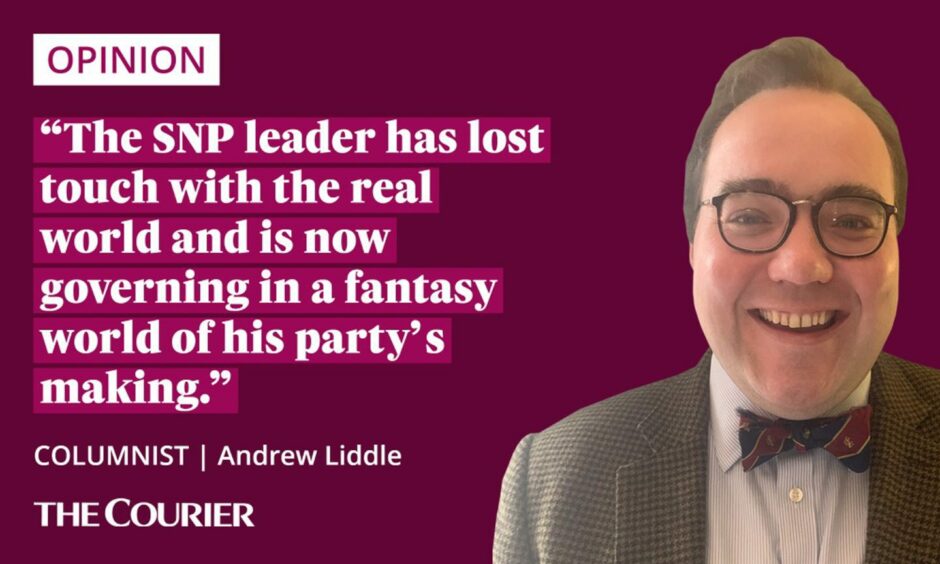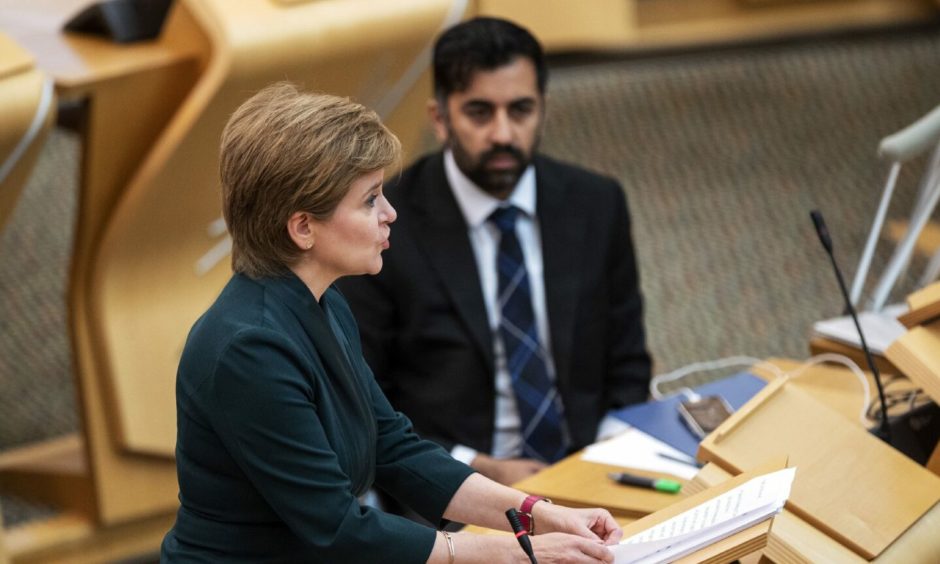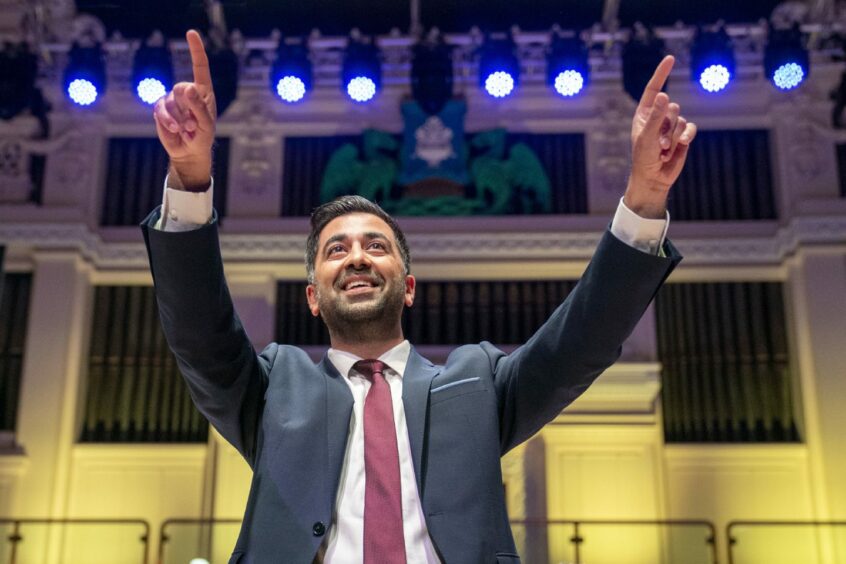Where Disraeli had two nations, Humza Yousaf has two realities.
The first of these is presided over by Yousaf, the SNP’s “First Activist”: here, Scotland is “so close” to independence that it is “within touching distance”.
All it will take to “break the logjam” is (yet another) SNP victory at the coming General Election where “there is everything to play for”.
And when that election is won “the people will have spoken” and independence will be achieved, with or without another referendum.
The second reality is presided over by Yousaf, heir-anointed to Nicola Sturgeon’s rusted crown. Here, independence is no closer now than it was in 2014.
Indeed, given there is no prospect of another referendum any time soon, independence could not actually be further away.

At the same time, the SNP is sliding down the polls to such an extent that it is, according to one recent survey, neck and neck with the Labour Party.
The electoral situation is now so severe for the SNP that five of its MPs have already announced they will voluntarily stand down at the next General Election rather than face defeat at Sir Keir Starmer’s hand.
To put such a figure in context, that is already more than 10% of the SNP’s Westminster group who are quitting, with more premature retirements likely and an election 18 months away.
In this reality, it is like the Nats are leaving a sinking ship.
SNP gearing up for defeat – not independence
Meanwhile, the spectre of Operation Branchform, the Police Scotland investigation into the SNP’s finances, continues to loom large.
Figures such as Sturgeon and her husband, Peter Murrell, recently so dominant, are now having to protest their innocence of any wrongdoing to braying reporters and a shocked public.
Readers of a certain persuasion may well try to convince themselves – and others – that the world of Yousaf, “First Activist”, is not just a fantasy.
But in truth it is not a matter for sensible debate.
Scotland is no closer to independence than it was in 2014 and the SNP is facing defeat at the next General Election.
This is the reality. And as much as Humza Yousaf may try to bluff and bluster, he is only deceiving himself and his diminishing cohort of followers.
It's been one month since I was elected leader of @theSNP. I promised I would not only be your First Minister, but also your First Activist.
Delighted to join some of our brilliant activists in Dundee chapping doors, talking to people about what matters to them.#ActiveSNP pic.twitter.com/roVOZVJlEq
— Humza Yousaf (@HumzaYousaf) April 29, 2023
The question now is what cost will Scotland have to bear from having a leader – and, indeed, a governing party – that is seemingly so out of touch with reality.
Voters do not share SNP leader’s focus on independence
The current indications are not good.
While people across the country worry about the cost-of-living crisis, the state of their children’s school, NHS waiting lists or – most probably – all of the above, the SNP chose to use the last week of the Scottish Parliament’s session to focus on the “First Activist’s” reality.
Here, Angus Robertson led a debate on “the Constitution of an Independent Scotland” – a subject more remote than St. Kilda, and far less interesting.
The most absurd thing about the SNP’s promotion of this alternate reality is that it is actively damaging the party’s reputation and, indeed, the prospect of independence.
Alex Salmond built the case for separation on solid, competent government. After the SNP got the basics right, people were more willing to listen to – and sometimes countenance – the more outlandish arguments on independence.
Now, however, the situation has been reversed.
“First Activist” Yousaf is getting the basics wrong while making ever more detached pronouncements on the case for, and probability of, independence. The SNP leader has lost touch with the real world and is now governing in a fantasy world of his party’s making.
At the coming General Election, it will be the voters who bring him, and the SNP, back to reality.












